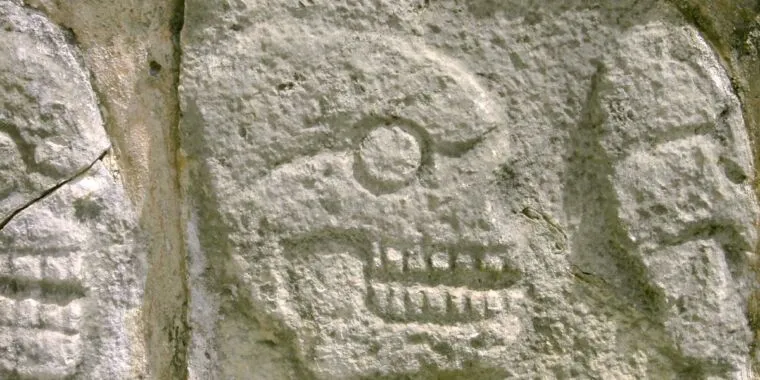Inhabitants of the ancient Maya city of Chichén Itzá are well-known for their practice of ritual human sacrifice. The most prevalent notion in the popular imagination is that of young Maya women being flung alive into sink holes as offerings to the gods. Details about the cultural context for these sacrifices remain fuzzy, so scientists conduced genetic analysis on ancient remains of some of the sacrificial victims to learn more. That analysis confirmed the prevalence of male sacrifices, according to a new paper published in the journal Nature, often of related children (ages 6 to 12) from the same household—including two pairs of identical twins.
Chichén Itzá (“at the mouth of the well of the Itzá”) is located in Mexico’s eastern Yucatán. It was one of the largest of the Maya cities, quite possibly one of the mythical capital cities (Tollans) that are frequently mentioned in Mesoamerican literature. It’s known for its incredible monumental architecture, such as the Temple of Kukulcán (“El Castillo”), a step pyramid honoring a feathered serpent deity. Around the spring and fall equinoxes, there is a distinctive light-and-shadow effect that creates the illusion of a serpent slithering down the staircase. There is also a well-known acoustical effect: clap your hands at the base of the staircases and you’ll get an echo that sounds eerily like a bird’s chirp—perhaps mimicking the quetzal, a brightly colored exotic bird native to the region and prized for its long, resplendent tail feathers.
The Great Ball Court (one of 13 at the site) is essentially a whispering gallery: even though it is 545 feet long and 225 feet wide, a whisper at one end can be heard clearly at the other. The court features slanted benches with sculpted panels depicting aspects of Maya ball games—which were not just athletic events but also religious ones that often involved ritual sacrifices of players by decapitation.
“Evidence of ritual killing is extensive throughout the site of Chichén Itzá and includes both the physical remains of sacrificed individuals as well as representations in monumental art,” the authors of the new Nature paper wrote. Decapitation was just one method of sacrifice favored by the Maya over various historical periods. The Maya were equally fond of cutting out the still-beating hearts of victims, accessing the organ either from below the diaphragm or through the sternum. There were also rituals that involved binding victims to a stake and shooting arrows at a white target painted on the heart.
The site features underground rivers with natural sinkholes, called cenotes, providing water to the local inhabitants. One of those is known as the Cenote Sagrado (“Sacred Cenote”), or the Well of Sacrifice, some 200 feet (60 meters) wide and surrounded by sheer cliffs. As its name implies, the Maya would regularly sacrifice valuable objects and the occasional human by tossing them into the sinkhole to appease the Maya rain god, Chaac. (If the 89-foot (27-meter) fall didn’t kill them, drowning would.)


